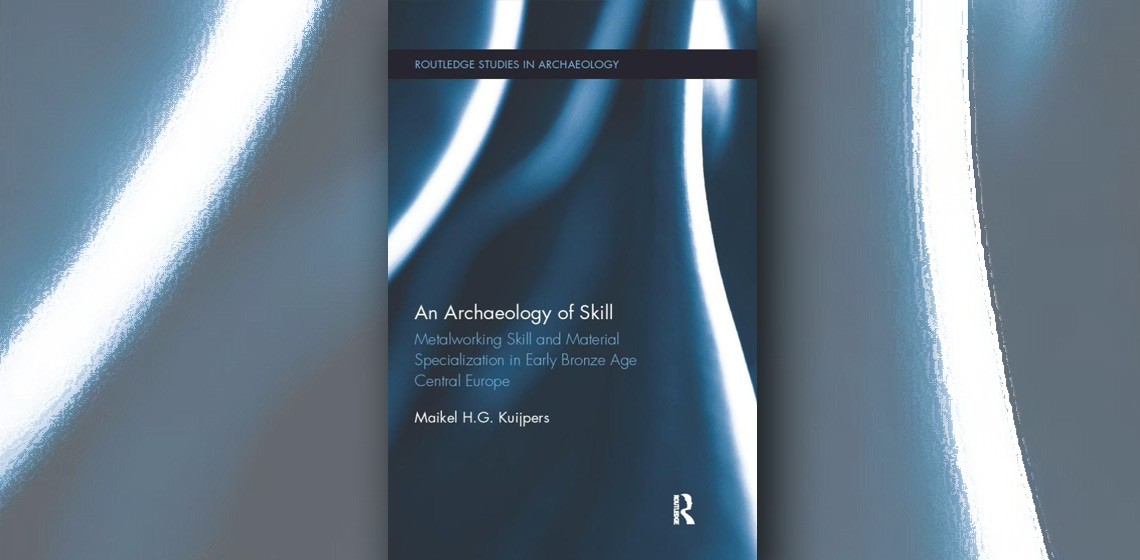
Craft is a difficult thing to define. The skills required to make objects is ephemeral. We know it when we see the results of craftsmanship, but studies about understanding the development and practice of the skills of craftsmanship are rare. Furthermore, the application of these studies to archaeology are almost non-existent. Statements about craft in archaeological literature are made in the context of material culture or within cultural groups, but the exploration of the skill that goes into making crafts is taken for granted. The only evidence we have is in the finished product.
Dr. Maikel Kuijpers set out to explore this territory. He is both an accomplished archaeologist and archaeometallurgist, but he realised that simply knowing the chemical makeup of alloys and the typology of metal objects gave an incomplete picture of early metalworking. To learn more, he turned to skilled craft workers who specialised in ancient metalworking techniques and joined them in learning to cast bronze. During this time, he set out to explore how skill is acquired through discursive and non-discursive learning and the relationship between craftspeople with the materials they use.
An Archaeology of Skill addresses issues about a more “complete embodiment of the craft of metalworking” where Kuijpers pulls together the archaeological interpretation of metalworking with the hard data generated by laboratory analyses. The book puts forward a theory of craft in which skill is recognised in archaeological materials from the perspective of a craftsperson. It seeks to go beyond the understanding of the materials to the learning process and the skilled actions that go into creating crafted objects. While this is not a book specifically about experimental archaeology, Kuijpers recognises the need for archaeologists to better understand the craft of metalwork and to comprehend the sensory engagement with the materials alongside the skills that are necessary to create metal objects. He proposes an archaeology of the senses that explores the relationship between the craftsperson and the craft material. This focus on human engagement with materials stresses the importance of the senses, the body, and by extension the tools used in craft.
Focussing on Late Copper and Early Bronze Age axes of the Northern Alpine region, Kuijpers uses the archaeological objects to demonstrate the skills needed in the development of a wholly new medium. Through the examination of the chaîne opératoire of Early Bronze Age axes Kuijpers creates a methodology that focuses not only on the techniques used, but also the skills that were needed at various stages of production, resulting in evidence-based examples that give evidence for the levels of skill required in order to make these axes. His theory of craft brings these skills forward to enable the archaeologist to recognise the role that skill plays in social complexity.
Throughout the work Kuijpers displays his love of craftsmanship and fascination with skill acquisition. The book is valuable reading for anyone interested in understanding craftsmanship, and craft in archaeology, regardless of the medium, and how craft is intertwined with social structure. For those working in experimental or experiential archaeology it is a valuable book for gaining insight into skill acquisition and exploring a more theoretical side of craft in experimental work. In addition to the book, I would recommend his video, The Future is Handmade https://www.youtube.com/watch?time_continue=752&v=jOMujtoicTk
Book information:
An Archaeology of Skill: Metalworking Skill and Material Specialization in Early Bronze Age Central Europe
Published by Routledge
(UK) 2 Park Square, Milton Park, Abingdon, Oxon OX14 4RN
(US)711 Third Avenue, New York, NY 10017
ISBN 9781138718098 (hardback)
ISBN 9781351765800 (ePUB)
LCCN 2017015841 (print) | LCCN 2017016043 (ebook)